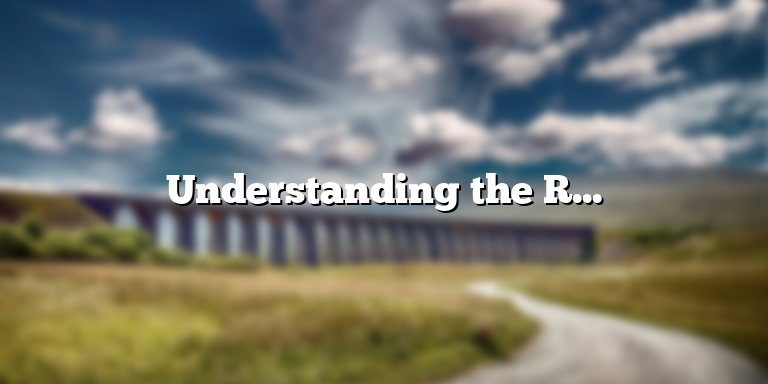
What Is Runoff Water?
Runoff water refers to the excess water from rainfall, melting snow, or other sources that doesn’t soak into the ground. Instead, it flows over the land’s surface and eventually drains into streams, rivers, lakes, or oceans.
When precipitation falls, some of it infiltrates into the soil, nourishing plants and replenishing groundwater. However, when the soil is already saturated or impermeable, the water begins to flow across the surface as runoff.
Runoff is a key element of the water cycle, playing a crucial role in redistributing water throughout the environment. However, it can also have significant consequences—both beneficial and harmful—depending on how it interacts with natural and human systems.
How Does Runoff Occur?
Runoff occurs when the amount of precipitation exceeds the soil’s capacity to absorb water. Several factors influence this process:
- Soil Type: Sandy soils absorb water quickly, reducing runoff, while clay-heavy soils absorb water slowly, leading to higher runoff levels.
- Land Slope: Flat terrain allows more infiltration, while steep slopes encourage faster surface flow.
- Vegetation Cover: Plants slow down water flow and promote infiltration, whereas bare soil increases runoff.
- Rainfall Intensity and Duration: Heavy or prolonged rainfall can overwhelm the soil’s absorption capacity, resulting in more runoff.
In urban areas, where surfaces like concrete and asphalt dominate, runoff becomes more severe because water cannot penetrate these impermeable materials. This is why cities are more prone to flash floods and stormwater buildup after heavy rain, as noted by the U.S. Geological Survey (USGS).
Impacts of Runoff Water
Runoff is a natural process, but excessive runoff can lead to several environmental and societal problems.
- Soil Erosion: Fast-flowing runoff can strip away fertile topsoil, reducing soil productivity and damaging plant life.
- Water Pollution: As runoff moves over land, it picks up pollutants such as fertilizers, pesticides, and chemicals, carrying them into rivers and lakes. This can degrade water quality and harm aquatic ecosystems.
- Flooding: When too much runoff accumulates in low-lying areas, flooding can occur, damaging infrastructure, crops, and homes.
- Habitat Destruction: Runoff can alter the balance of freshwater ecosystems, affecting both plants and animals that rely on stable water conditions.
In short, runoff connects land and water systems—but when unmanaged, it can become a serious environmental issue. Implementing sustainable water management techniques can help mitigate these impacts.
Why the Runoff Water Cycle Matters
The runoff water cycle is one of the most important processes in maintaining Earth’s water balance. It describes how water moves downhill across the land’s surface toward rivers, lakes, and oceans. Without it, the planet’s freshwater systems would not receive the continuous supply they need.
Runoff helps sustain:
- Rivers and Streams: Most freshwater bodies depend on runoff as a constant source of replenishment.
- Wetlands and Lakes: These ecosystems rely on surface water flow to maintain their water levels.
- Groundwater Recharge: Some runoff eventually seeps into the ground, replenishing underground aquifers.
This process supports not only natural ecosystems but also human activities like agriculture and drinking water supply.
The Runoff Water Cycle and Human Influence
Human activities significantly alter the natural runoff cycle. Deforestation, urbanization, and large-scale agriculture all change how water moves across the land.
- Deforestation removes vegetation that naturally slows runoff and allows more water to soak into the soil.
- Urbanization replaces soil with impermeable materials such as roads and pavements, increasing surface runoff.
- Agricultural Practices involving over-irrigation or improper land management can compact soil, reducing infiltration and increasing runoff.
These human-induced changes lead to higher flood risks, degraded water quality, and disturbed ecosystems. According to the U.S. Environmental Protection Agency (EPA), effective stormwater management systems are essential to prevent pollution and flooding in urban areas.
To minimize these effects, we must adopt sustainable land-use practices, restore natural vegetation, and design cities with green infrastructure—like rain gardens and permeable pavements—that promote infiltration.
Stages of the Runoff Water Cycle
The runoff water cycle consists of several interconnected stages, each playing a vital role in moving and managing water on Earth.
1. Precipitation
It all begins when water vapor condenses in the atmosphere and falls as rain, snow, or hail. Depending on soil saturation and surface conditions, some of this water infiltrates into the ground, while the rest becomes surface runoff.
When precipitation is intense or prolonged, soils quickly reach their absorption limit, causing excess water to flow across the land.
2. Infiltration
Infiltration occurs when water seeps into the soil. Healthy soils with rich organic matter and vegetation absorb water efficiently, replenishing groundwater supplies. In contrast, compacted or barren soils have low infiltration rates, leading to greater runoff.
Learn more in our guide: How Infiltration Affects Groundwater Recharge.
3. Runoff
Once the soil’s capacity is exceeded, water begins to flow downhill. It may move overland into rivers or collect in storm drains in urban settings. The amount of runoff depends on terrain, rainfall intensity, and land use.
4. Collection
Finally, the runoff water gathers in natural (rivers, lakes, oceans) or artificial reservoirs (dams, storage tanks). This collected water can later evaporate and re-enter the atmosphere—continuing the cycle—or be used for irrigation, drinking water, and hydroelectric power.
Managing Runoff for a Sustainable Future
To maintain a healthy water balance, humans must learn to manage runoff effectively. Several methods can help minimize its negative impacts:
- Green Infrastructure: Using permeable pavements, bioswales, and rain gardens to allow water to soak into the ground naturally.
- Reforestation and Vegetation Restoration: Trees and plants reduce erosion, slow down water flow, and promote infiltration.
- Rainwater Harvesting: Collecting rainwater from rooftops for reuse helps reduce runoff and conserve freshwater.
- Urban Planning: Designing cities with proper drainage systems and green spaces to absorb excess water.
These practices not only mitigate flooding and pollution but also help recharge groundwater and support ecosystem resilience.
The Bottom Line
The runoff water cycle plays an essential role in maintaining Earth’s water balance. It redistributes water from precipitation, supports ecosystems, and replenishes freshwater resources. However, when human activities disrupt this cycle, the effects can be destructive—flooding, erosion, and water pollution.
By understanding how runoff works and implementing sustainable water management techniques, we can protect the environment, secure clean water supplies, and preserve the balance of nature for generations to come.





